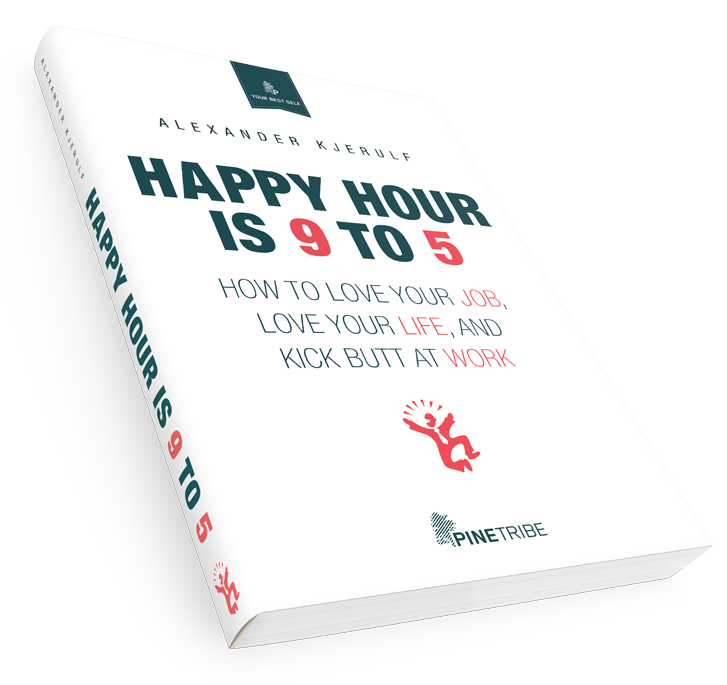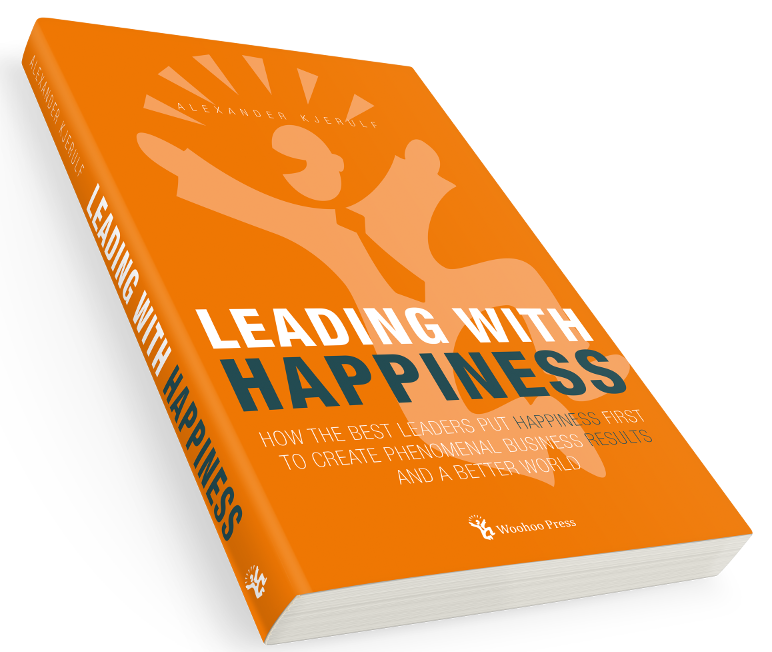Gene Fowler, the CEO of Fatkat Animation Studios in Canada read my book and really, really liked it. He wrote this review for Progress Magazine:

Thanks Gene – I’m blushing here :o)
Read the whole book free online or buy it on paper or pdf here.
Gene Fowler, the CEO of Fatkat Animation Studios in Canada read my book and really, really liked it. He wrote this review for Progress Magazine:

Thanks Gene – I’m blushing here :o)
Read the whole book free online or buy it on paper or pdf here.
Randy Pausch, a professor at Carnegie Mellon University is dying of pancreatic cancer. He has 2-5 months to live.
He was asked to give a last lecture – and a packed hall experiences something profound: A man who is happy in the face of death.
As he says at the beginning:
“If I don’t seem as depressed or morose as I should be, sorry to disappoint you.”
He also told people not to pity him:
“I am in phenomenally good health right now; it’s the greatest cognitive dissonance you will ever see — the fact is, I’m in better shape than most of you,” he said.
And then, to the appreciative laughs and applause of his audience, Dr. Pausch dropped to the stage floor and did a set of pushups.
“So anyone who wants to cry or pity me can come down here and do a few of those, and then you may pity me,” he said.
From this article.
The best line of the day:
“If you have any herbal supplements or remedies – stay away from me!”
Here’s a short five minute version with just a few highlights:
Click here to see the whole lecture – it’s easily the most inspiring 90 minutes I’ve ever spent.
 The most dangerous leadership myth is that leaders are born — that there is a genetic factor to leadership. This myth asserts that people simply either have certain charismatic qualities or not. That’s nonsense; in fact, the opposite is true. Leaders are made rather than born.
The most dangerous leadership myth is that leaders are born — that there is a genetic factor to leadership. This myth asserts that people simply either have certain charismatic qualities or not. That’s nonsense; in fact, the opposite is true. Leaders are made rather than born.
– Warren Bennis
I could not agree more. Good leadership is about making your people happy and while that certainly comes easier and more naturally to some people, almost anyone can learn.
Tag chokolade-testen… Tænd for lyden på din PC og Tryk Play!
(This post is in Danish. Click here for an English version.)
 I’ve been hard at work over the last couple of days putting together a tremendously cool event here in Copenhagen.
I’ve been hard at work over the last couple of days putting together a tremendously cool event here in Copenhagen.
The theme is goals. Do you have the right goals in life and at work? What do your goals do to you? Are you always chasing goals other people set for you? Are you one of the people who never seem to reach their goals? Or do you reach them – but forget to enjoy it?
Maybe you’re a goal-a-holic, like so many others these days. You can test yourself here, to see if you are.
This event will highlight:
The speakers include Nicolai Moltke-Leth, one of Denmark’s leading business speakers, Stephen Shapiro, author of Goal-Free Living – and yours truly :o)
The event takes place on Friday Oct. 5 from 1-4 PM in Copenhagen. It will be partly in English and partly in Danish and it only costs 300 DKK per person. Sign up fast, there’s only room for 200 people and I have a feeling this is going to be huuuuuge :o)

Here’s a great quote that speaks to the true nature of good leadership:
Leadership is the art of getting someone else to do something you want done because he wants to do it.
– Dwight D. Eisenhower
The key here is “because he wants to do it.” This is called intrinsic motivation, and it’s the only type of motivation that works reliably and in the long term.
Companies who practice this find that they no longer need to struggle to motivate people and light their fire – people motivate themselves. They approach work with zest, creativity and energy because what they want to do matches what the company wants them to do.
You don’t need to whip them with an endless succession of bonuses, prizes, thinly veiled threats, cheap corporate tchotchkies or meaningless awards to get them to perform. And anyway, there’s no way any of that can ever match the results people create when they’re simply happy at work.
Peter Block and Peter Koestenbaum put it like this in their excellent book Freedom and accountability at work:
We currently act as if people are not inherently motivated, rather that they go to work each day and wait for someone else to light their fire.
This belief is common among managers and employees alike…
It is right and human for managers to care about the motivation and morale of their people, it is just that they are not the cause of it.
True motivation can only come from inside yourself – in life and at work. Goals that others set up for you, with no regard for your wishes can never truly motivate, no matter what punishments or rewards are held up before you.
So: What motivates you at work? What tasks do you approach with relish? What parts of your work fill you with energy and a natural desire to do a great job? Please write a comment, I’d really like to know.
I previously explored motivation here:
 I’m giving two free presentations in Copenhagen over the next month, one on October 2nd on stress and happiness at work and one on Novemer 1st about happiness at work coaching.
I’m giving two free presentations in Copenhagen over the next month, one on October 2nd on stress and happiness at work and one on Novemer 1st about happiness at work coaching.
They’ll be held in Danish and you can read all about’em and sign up here:
 I’ve just come across one of the most fantastic things I’ve ever seen on the net.
I’ve just come across one of the most fantastic things I’ve ever seen on the net.
Background: A photographer is taking some pictures of huskies in the snow in northern Canada. The huskies are chained to stakes in the ground (as they normally are). Then a huge, wild, male polar bear appears and heads straight for one of the huskies.
At this point in the story I was thinking “so long, husky. Nice knowing ya.” And then something astonishing and beautiful happens.
Watch the slide show and tell me if this isn’t one of the strangest things ever.
Here’s what I take from this video: If the husky had met the polar bear with aggression, he’d have been toast. Or served on toast. But by meeting a huge(!) danger with a playful attitude it became a moment of fun instead of violence.
I think this can work often in life. It’s not the way you meet an oncoming, jackknifed tanker truck – they don’t respond well to a playful attitude.
But in many other situations, meeting risk or sticky situations with an invitation to play can in itself make a huge difference. At least, you’re not escalating a bad situation yourself.
This is of course contrary to common wisdom, where you should always “expect the worst”. Well, sometimes expecting the worst, brings about the worst.
Have you ever tried meeting a tricky situation at work with a playful attitude? How did you do it? Write a comment, I’d really like to know!
 I was interviewed by Revvell Revvati of The Book Crawler on Monday and we had a great time talking about happiness at work in general, and specifically about:
I was interviewed by Revvell Revvati of The Book Crawler on Monday and we had a great time talking about happiness at work in general, and specifically about:
 I previously wrote about my good friends on C4 and how they’re helping Africa by letting people like you and me invest in small African businesses.
I previously wrote about my good friends on C4 and how they’re helping Africa by letting people like you and me invest in small African businesses.
They are now moving into an open beta and are looking for more people to use the system. Won’t you join me there?
I’ve been using it for a while now and have already invested in a group of 6 women who want to sell auto spare parts and in Sulaiman Bulega (shown in the picture) who is going to expand the selection of office stationery in his store.
The really cool thing here is not only that helping people in the third world feel great – I also stand to get my investments back, with interest. So far, all the investments on the site have been repaid in full, meaning the default rate on the loans is lower than in banks in developed nations.
It’s really simple to join the site and to use it – but you will have to put at least 150 Euro (about 200 USD) in your account which you can then immediately invest in Africa.
In my opinion, THIS is how we will help the third world. Not by giving away money and aid but through investments and trade.
I urge you to join C4 – read all about it here and join here.
“I can’t believe it – a newsletter actually worth reading!”
– Subscriber
Over 6,000 people subscribe to our newsletter with tons of tips about happiness at work.

“It’s very, very good. It’s incredibly well written, full of insights, and there are exercises to improve your own happiness at work. You can’t ask for more than that!”
– David Maister, author of Practice What You Preach

“What an inspiring book. Every leader should read it. This type of leadership has been integral to our success and I know it will boost your results too.“
– Garry Ridge, CEO WD-40 Company
Over 6,000 people already get our free newsletter with useful tips, videos, links and articles about happiness at work.
Subscribe to our newsletter here.